Why is Dance Therapy so Effective?
The power of dance therapy for physical, mental and social health is something that there is much more evidence for than most people believe. An exercise physiologist uses evidence-based clinical research to design individualised exercise programs and provide the highest level of care possible. There is a high standard of clinical proof for dance therapy to be used as an effective intervention.
James Rigby specialises in ballroom dancing, currently using ballroom figures and techniques in interventions; however, it doesn’t matter what style you choose! Every style can work according to Koch, who states that dance therapy has such a holistic therapeutical effect because of the 5 mechanisms behind it:
- Hedonism (pleasure and play, non-goal orientation)
- Esthetic experience (experiencing beauty, body-mind unity, unity with a partner, etc.) and its authentic expression
- On-verbal meaning-making (communication, emotional expression and regulation, social interaction)
- Enactive transitional space (experiencing activity, agency, self-efficacy, constructive resources, test-acting, enactment, rituals, and transformation)
- Creation (generativity, productivity
Research shows that when compared with ‘non-specialised dance instructors’ (specialised therapists, physiotherapists, exercise instructors or researchers) ‘specialised dance therapy instructors and dance theory therapists yielded larger effects. This highlights the importance of the quality of the dancer when receiving this type of therapy!
Dance Therapy for Cardiovascular Health
Dance therapy can be a great form of aerobic exercise and, with a professional who understands the principles of interval training, it can be modified to be even more effective. This aerobic form of exercise has a positive effect on the cardiovascular system. In a study conducted by Koch, following four weeks of dance therapy, paired t-test analysis showed that there was a statistically significant difference in the resting systolic blood pressure (p < 0.001*), resting diastolic blood pressure (p < 0.001*), resting heart rate (p = 0.024*), maximum heart rate (p=0.002*) and estimated oxygen consumption (VO2max) (p = 0.023*) in subjects. Conceição et al. (2016), Gomes Neto et al. (2014), Kiepe et al. (2012), and Rodrigues-Krause et al. (2016) also investigated dances’ effect on medical conditions such as heart failure and hypertension. The results indicated dance may improve these conditions.
Dance Therapy for Parkinson’s Disease
Parkinson’s disease as defined by WHO (World Health Organisation):
- Parkinson’s disease (PD) is a brain condition that causes problems with movement, mental health, sleep, pain and other health issues.
- PD gets worse over time. There is no cure, but therapies and medicines can reduce symptoms. Common symptoms include tremors, painful muscle contractions and difficulty speaking.
- Parkinson’s disease results in high rates of disability and the need for care. Many people with PD also develop dementia.
Given that dance therapy is highly effective in improving cognition there is no surprise that it is a highly effective treatment for those with Parkinson’s. The reviews on Parkinsons disease investigated the effects of dance therapy on motor function and quality of life. Significant improvements in balance (Berg Balance Scale), motor impairments (UPDRS-Scale, Timed-Up-and-Go scale), and quality of life were found in the intervention groups.

Organisations such as Dancing Against Dementia understand its value
Dance Therapy for Mental Health
There are many papers on the benefits of general exercise for mental health as well as dance movement therapy. Dance therapy has some very disease-specific applications like Parkinson’s and Dementia due to the long-term positive effects on:
- Neuroplasticity, such as learning and remembering complex motor movements
- Focusing attention on following instructions
- Executing complex movement patterns
- Integrating visual and rhythmic movements
- Social cognition that links emotional expression between individuals in social interactions.
However, it also works in the same mechanism normal exercise does for the brain in terms of increasing endorphins and thereby pain relief, causing a reduction in stress and improvement of an overall sense of well-being.
Prescription for Practitioners
Given that dance requires multiple systems to work together, screening a potential client is important to ensure safety. I would recommend referring to a therapist specialising in dance, however, if you were conducting the screening these tools may help
- APSS (General overall health)
- Fall efficacy scale (Balance capacity is crucial to understand)
- PHQ-9 (if necessary for those who want to measure psychological improvement)
- Örebro Musculoskeletal Pain Questionnaire (Physical pain)
- Interview going through:
- Medical history
- Exercise history
- Goals
Objective measures are also a necessity if using dance as a therapy. These measures will help guide prescription.
- 30 sec STS or 6 min walk test (Great for testing cardiovascular health in low to general populations)
- Grip strength (general population)
- Yo yo or beep test (Cardiovascular test for an athlete)
- Tandem stance balance (general population)
- Dynamic single-leg balance (athletes)
- 3RM Squat (athlete)
- Box Jump (athlete)
- 3 RM chest press (athlete)
- 3 RM barbell row (athlete)
Contact Us (07) 5523 9994 to Start Your Road to Recovery with the Team You can Trust!
To make a consultation or book your next appointment? Our physio experts are here to give you a helping hand. Please give us a Call or Contact Us via the online form.




